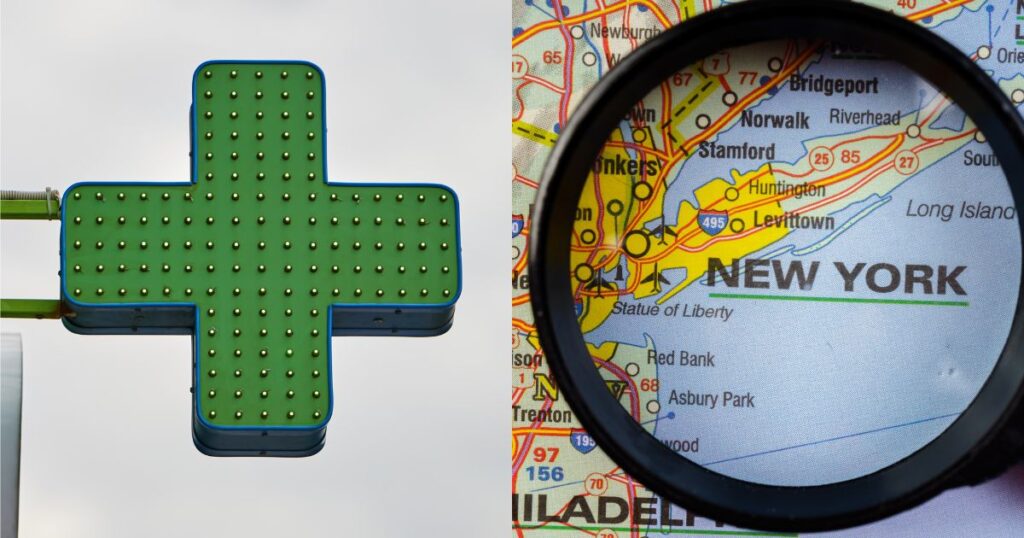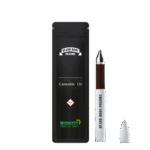New York’s legal cannabis industry is facing another significant setback. The Office of Cannabis Management (OCM) recently revealed a major oversight that could force over 150 retail cannabis businesses to relocate or potentially shut down.
This regulatory blunder represents one of the most serious challenges yet for an industry already struggling with implementation issues since legalization began.
The problem stems from a fundamental misinterpretation of state law regarding how far cannabis dispensaries must be located from schools.
What started as a routine compliance review has snowballed into a crisis affecting over 150 licensed dispensaries, with the majority concentrated in New York City.
The Legal Interpretation That Changed Everything
Cannabis Law § 72 (6) clearly states that no cannabis retail licensee can locate a storefront within 500 feet of school grounds. However, OCM had been measuring this distance incorrectly since the program’s inception in 2022.
The agency had been calculating the 500-foot requirement from the entrance door of a school to the entrance of a cannabis dispensary. Under the correct legal interpretation, this distance should be measured from the dispensary entrance to the school’s property line boundary.
This seemingly minor difference in measurement methodology has created massive consequences for business owners who followed the state’s original guidance.
Education Law § 409 (2) defines school grounds as “any building, structure and surrounding outdoor grounds, including entrances or exits contained within a public or private pre-school, nursery school, elementary or secondary school’s legally defined property boundaries as registered in a county clerk’s office.”
When read together with the cannabis law, dispensaries cannot operate within 500 feet of these property boundaries.
The New York OCM acknowledged the error in a memo to affected businesses, stating that the agency’s previous measurement method “does not align with cannabis law.”
This admission came after a comprehensive review of OCM practices conducted under new leadership to ensure compliance with the Marijuana Regulation and Taxation Act.
The Scale of Impact to New York’s Cannabis Industry
The regulatory correction affects 152 cannabis businesses across New York State. This includes 108 already-licensed retail dispensaries and 44 applicants still awaiting approval. Of these affected businesses, approximately 60 dispensaries are currently operational and serving customers.
New York City bears the brunt of this crisis, with 89 of the 108 affected licensed businesses located within the five boroughs. When considering pending applications, 38 out of 44 affected applicants are also in New York City. This concentration reflects the challenges of finding suitable retail space in dense urban environments where schools are prevalent.
The regional breakdown shows the widespread nature of the problem. Beyond New York City, affected businesses span across the Capital District, Central New York, Finger Lakes, Long Island, Mid-Hudson, Mohawk Valley, North Country, Southern Tier, and Western New York regions.
Each area faces unique challenges in finding alternative locations that comply with both cannabis law and local zoning requirements.
Many of these impacted businesses were approved under the state’s social equity programs, designed to provide opportunities for communities disproportionately affected by cannabis prohibition.
The relocation requirement now threatens to undermine these equity initiatives by forcing operators to abandon established locations and relationships with their communities.
Financial Consequences and Support Measures
The financial implications of this regulatory correction are staggering. Business owners who invested significant capital in their current locations now face the prospect of starting over elsewhere. Site preparation costs, lease agreements, security deposits, and buildout expenses represent substantial investments that may be lost if relocation becomes necessary.
Recognizing the severity of the situation, the Hochul administration has established an Applicant Relief Program funded with $15 million. This program allows affected applicants to seek coverage up to $250,000 for expenses related to finding new locations or covering costs associated with their original, now non-compliant sites.
However, this financial assistance comes with important limitations. The relief program specifically targets applicants who have not yet received licenses, leaving the 108 already-licensed businesses in a more precarious position. While these established businesses can continue operating at their current locations, they face an uncertain future when their two-year licenses come up for renewal.
The $250,000 maximum assistance amount may not cover the full scope of relocation costs for many businesses. Finding suitable alternative locations in New York’s competitive real estate market, especially in New York City, often requires significant upfront capital. Additional expenses include new lease negotiations, security systems, inventory transfer, staff retraining, and potential loss of established customer relationships.
Legislative Solutions and Political Response
The Hochul administration is pursuing legislative remedies to address this crisis. The governor’s office and OCM are proposing legislation that would grandfather existing dispensaries, allowing them to remain at their current locations despite the proximity issue.
However, the success of this legislative solution remains uncertain. As OCM’s memo explicitly states, “passage of proposed legislation is the prerogative of the New York State Legislature and is not a guarantee.” This uncertainty leaves business owners in limbo, unable to make long-term plans or investments with confidence.
State Senator Liz Krueger, a key architect of New York’s cannabis legalization law, has pledged to support corrective legislation when the legislature reconvenes in January.
Political reactions have been mixed, with Republican lawmakers seizing on the issue as evidence of broader problems with the state’s cannabis program.
Assemblyman Ed Ra characterized the situation as “yet another black eye” for an already troubled rollout, while Assemblyman Matt Slater criticized the administration for “breaking its own law.”
Operational Challenges for Dispensaries
Currently operating dispensaries find themselves in a particularly challenging position. While they can continue serving customers and conducting business as usual, the uncertainty surrounding license renewal creates significant operational difficulties.
These businesses cannot make long-term commitments or substantial investments in their current locations without knowing whether they’ll be forced to relocate. Equipment purchases, lease renewals, expansion plans, and marketing initiatives all become complicated when the business’s future location remains uncertain.
For dispensaries that have built strong relationships with their local communities, relocation represents more than just a logistical challenge. These businesses often serve as important resources for medical cannabis patients and contribute to local economic development. Moving to new locations may disrupt these relationships and force customers to travel greater distances for access.
The two-year license renewal cycle adds urgency to the situation. Businesses that received licenses in the program’s early days will face renewal decisions sooner than others. Without legislative intervention, these operators must begin searching for alternative locations immediately to ensure continuity of operations.
The Broader Context of New York’s Cannabis Rollout
This proximity correction crisis represents just the latest challenge in New York’s troubled cannabis implementation. The state’s legal marijuana program has faced numerous obstacles since launching, including slow license approvals, inadequate enforcement against illegal operators, complex equity requirements, and ongoing legal challenges.
The proliferation of unlicensed cannabis retailers has created additional pressure on legal operators. These shops often operate without regard for proximity requirements or other regulations, creating unfair competition for compliant businesses.
The current crisis may further disadvantage legal operators who must now invest additional resources in relocation while illicit competitors face no such requirements.
OCM has undergone significant leadership changes as the Hochul administration attempts to address systemic problems within the agency. Reid’s appointment as acting executive director came amid calls for reform and improved oversight.
The agency’s early years were marked by regulatory uncertainty, changing guidance, and implementation delays. Cannabis farmers complained about tax burdens that made their products uncompetitive with illegal alternatives.
Retail operators struggled with complex application processes and unclear requirements. This proximity correction adds another layer of complexity to an already challenging regulatory environment.
Looking Forward
The resolution of this crisis will likely influence the long-term viability of New York’s legal cannabis market. If the legislature approves grandfathering legislation, existing businesses can continue operating while the state implements better compliance systems for future applications.
However, if legislative relief fails, the forced closure or relocation of 152 businesses could severely damage confidence in the state’s regulatory framework.
For business owners currently affected, the immediate focus remains on preparing for multiple scenarios. Those with the financial resources are beginning to search for alternative locations that comply with proximity requirements. Others are advocating for legislative relief while maintaining their current operations.
The state has established a dedicated email address (Locations@ocm.ny.gov) for questions related to the proximity correction.
This regulatory correction serves as a costly reminder of the importance of precise legal interpretation in cannabis policy implementation.
The difference between measuring from a school’s entrance versus its property line seemed minor during the initial policy development but has created major consequences for hundreds of business owners and their employees.
The coming months will determine whether New York’s cannabis industry can overcome this latest challenge and continue building a sustainable legal market, or whether regulatory uncertainty will continue to plague operators seeking stability in this emerging sector.















